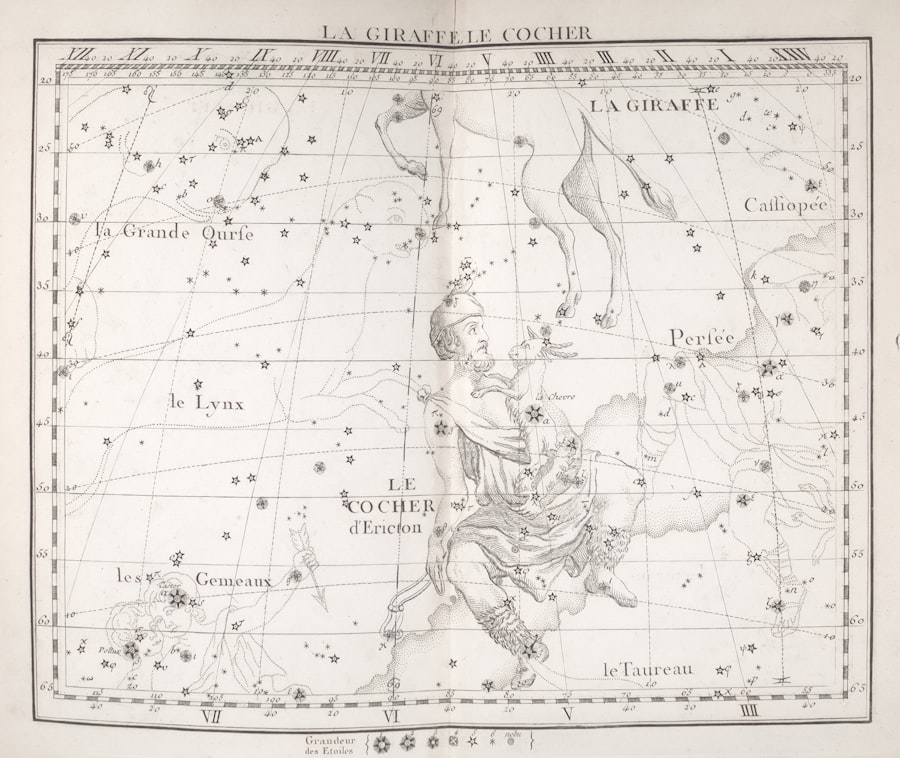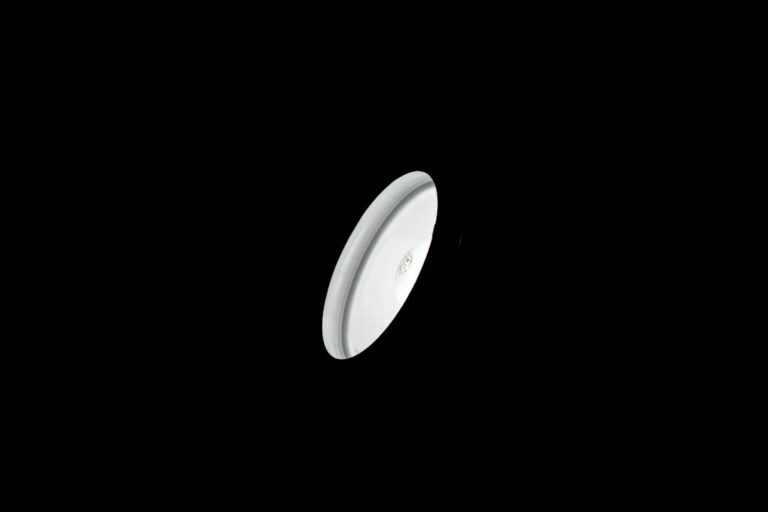Astrometry is a branch of astronomy that focuses on the precise measurement of the positions and movements of celestial objects. This discipline is fundamental to our understanding of the universe, as it provides the necessary data to determine distances, motions, and the physical characteristics of stars, planets, and other celestial bodies. By employing techniques that measure angles and distances with high accuracy, astrometry allows astronomers to create detailed maps of the night sky and track the movements of objects over time.
The measurements obtained through astrometric methods are crucial for various applications, including navigation, understanding stellar dynamics, and studying the structure of our galaxy. The significance of astrometry extends beyond mere positional measurements; it also plays a vital role in determining the orbits of celestial bodies. For instance, by observing the positions of stars and planets over time, astronomers can calculate their trajectories and predict future positions.
This capability is essential for missions involving spacecraft navigation and for understanding gravitational interactions between celestial objects. Astrometry serves as a foundational tool in astronomy, enabling scientists to build a coherent picture of the cosmos and its myriad components.
Key Takeaways
- Astrometry is the branch of astronomy that involves measuring the positions and movements of celestial objects.
- The history of astrometry dates back to ancient civilizations and has evolved with advancements in technology.
- Astrometry plays a crucial role in understanding the universe by providing valuable data on the positions, distances, and motions of celestial bodies.
- Astrometry is instrumental in the search for exoplanets, as it helps in detecting the wobble of stars caused by the gravitational pull of orbiting planets.
- Astrometry has a significant impact on cosmology by contributing to our understanding of the structure, evolution, and dynamics of the universe.
The History of Astrometry
Ancient Greek Contributions
However, it was not until the Hellenistic period that astrometry began to take on a more systematic approach. Figures like Hipparchus and Ptolemy made significant contributions by compiling star catalogs and developing models to explain the movements of celestial objects.
The Renaissance and the Advent of Precise Instruments
The Renaissance marked a pivotal moment in the history of astrometry with the advent of more precise instruments. Tycho Brahe, a Danish astronomer in the late 16th century, revolutionized observational astronomy with his meticulous measurements of planetary positions using large, ground-based telescopes. His work laid the groundwork for Johannes Kepler’s laws of planetary motion, which described how planets move in elliptical orbits around the Sun.
The Evolution of Astrometry into a Rigorous Scientific Discipline
By the 18th century, astrometry had evolved into a rigorous scientific discipline, with astronomers like John Flamsteed and Friedrich Bessel making significant strides in measuring stellar parallax and determining distances to stars.
The Role of Astrometry in Understanding the Universe

Astrometry plays a crucial role in our quest to understand the universe by providing essential data that informs various fields of astronomy. One of its primary contributions is in determining distances to celestial objects. The concept of parallax, which involves measuring the apparent shift in position of a nearby star against distant background stars as Earth orbits the Sun, is a fundamental astrometric technique.
This method allows astronomers to calculate stellar distances with remarkable accuracy, forming a cosmic distance ladder that is vital for measuring distances to galaxies and other astronomical phenomena. Moreover, astrometry aids in understanding stellar dynamics and the structure of our galaxy. By tracking the motions of stars within our Milky Way, astronomers can infer gravitational interactions and map out the distribution of dark matter.
The precise measurements obtained through astrometric techniques enable researchers to study star clusters, binary systems, and even the motion of stars around supermassive black holes at the centers of galaxies. This information is critical for constructing models of galaxy formation and evolution, shedding light on how galaxies interact and evolve over cosmic timescales.
Astrometry and the Search for Exoplanets
| Category | Metric |
|---|---|
| Astrometry | Positional measurements of stars |
| Exoplanet Search | Detection of exoplanets through astrometric methods |
| Technology | High-precision instruments for astrometric observations |
| Challenges | Accounting for stellar wobbles and other sources of error |
The search for exoplanets—planets orbiting stars outside our solar system—has been significantly enhanced by astrometric techniques. One of the primary methods employed in this search is known as astrometric microlensing, which relies on measuring tiny shifts in a star’s position caused by the gravitational influence of an orbiting planet. When a planet passes in front of a distant star, its gravity can bend light from that star, causing it to appear slightly displaced from its original position.
By detecting these minute changes in position, astronomers can infer the presence of an exoplanet. Additionally, astrometry has been instrumental in confirming the existence of exoplanets through precise measurements of stellar wobbles caused by orbiting planets. This technique, known as radial velocity or Doppler spectroscopy, involves measuring shifts in a star’s spectral lines due to its motion induced by gravitational interactions with an orbiting planet.
By combining radial velocity data with astrometric measurements, astronomers can determine not only the presence but also the mass and orbital characteristics of exoplanets. This synergy between astrometry and other observational techniques has led to significant discoveries in recent years, expanding our understanding of planetary systems beyond our own.
The Impact of Astrometry on Cosmology
Astrometry has profound implications for cosmology—the study of the universe’s origin, evolution, and ultimate fate. One of its key contributions lies in determining the scale of the universe through accurate distance measurements. By establishing a reliable cosmic distance scale using parallax measurements and standard candles like Cepheid variables, astronomers can estimate distances to galaxies and clusters.
This information is crucial for understanding the expansion rate of the universe and testing models of cosmic evolution. Furthermore, astrometric data has been instrumental in studying dark energy—a mysterious force driving the accelerated expansion of the universe. By mapping the distribution of galaxies and their motions through precise astrometric measurements, cosmologists can gain insights into how dark energy influences cosmic structure formation.
The ability to measure distances accurately also allows researchers to investigate the large-scale structure of the universe, revealing patterns that inform theories about its composition and dynamics.
Advancements in Astrometry Technology

The field of astrometry has witnessed remarkable advancements in technology over recent decades, significantly enhancing our ability to make precise measurements. One notable development is the advent of space-based observatories like the Hipparcos satellite launched by the European Space Agency in 1989. Hipparcos provided unprecedented accuracy in measuring stellar positions and parallax distances for over 100,000 stars, revolutionizing our understanding of stellar populations and galactic structure.
More recently, missions like Gaia have taken astrometric measurements to new heights. Launched in 2013 by the European Space Agency, Gaia aims to create a three-dimensional map of our galaxy by measuring positions, distances, and motions for over a billion stars with extraordinary precision. Gaia’s data has already led to groundbreaking discoveries about stellar populations, galactic dynamics, and even new insights into dark matter distribution within our galaxy.
The ongoing advancements in astrometric technology continue to push the boundaries of what we can learn about celestial objects and their interactions.
Astrometry and the Future of Space Exploration
As we look toward the future of space exploration, astrometry will play an increasingly vital role in guiding missions beyond our solar system. Accurate positional measurements are essential for navigating spacecraft as they venture into deep space or approach distant celestial bodies. For instance, missions targeting asteroids or comets require precise knowledge of their trajectories to ensure successful rendezvous and sample collection.
Moreover, astrometry will be crucial for future missions aimed at characterizing exoplanets and their atmospheres. As telescopes become more advanced, they will rely on astrometric techniques to identify potential targets for direct imaging or spectroscopic analysis. Understanding planetary systems around other stars will not only enhance our knowledge of planetary formation but also inform our search for habitable worlds beyond Earth.
The Importance of Astrometry in Unlocking the Mysteries of the Universe
Astrometry stands as a cornerstone in our quest to unlock the mysteries of the universe. Its ability to provide precise measurements has far-reaching implications across various fields within astronomy and cosmology. From determining distances to stars and galaxies to elucidating stellar dynamics and mapping cosmic structures, astrometry serves as an indispensable tool for researchers seeking to understand the fundamental workings of our universe.
As we continue to develop new technologies and methodologies within this field, we can expect even greater insights into celestial phenomena that have long puzzled scientists. The ongoing exploration of exoplanets will benefit immensely from astrometric techniques that allow us to probe their characteristics and potential habitability. In essence, astrometry not only enhances our understanding of individual celestial objects but also contributes significantly to our broader comprehension of cosmic evolution and structure.
Through its precise measurements and innovative applications, astrometry continues to illuminate pathways toward unraveling some of the most profound questions about existence itself.
If you are interested in exploring the philosophical aspects of Astrometry, you may find the article on Vedanta Philosophy particularly intriguing. This article delves into the nature of reality and human existence, touching on themes that may resonate with those studying the movements and positions of celestial bodies. To read more about Vedanta Philosophy, you can check out the article here.





















+ There are no comments
Add yours